#General Motors Technical Center
Text

View of the Styling Administration Building and the Styling Auditorium at the General Motors (GM) Technical Center. Printed on front: "Please credit Ezra Stoller." Label on back: "Styling buildings at the General Motors Technical Center. At left is the main entrance to the Styling Administration Building. In the background is the 88-foot Styling Auditorium, one of the most striking landmarks of the 330-acre site. (X 20070-10)." Stamped on back: "GM Photographic, 466 W. Milwaukee, Detroit, Mich. Please refer to this number when ordering prints."
National Automotive History Collection, Detroit Public Library
#gm#styling#general motors#detroit#gm photographic#architecture#detroit history#ezra stoller#general motors technical center#styling buildings#vintage#detroit public library
20 notes
·
View notes
Text

Eero Saarinen and Associates with Smith, Hinchman and Grylls, Artist, Alexander Calder, General Motors Technical Center, Fountain, Warren, Michigan, 1956
#fountain#Eero saarinen#Smith#Hinchman and Grylls#Fountain#art#design#architecture#urbanism#factory#General Motors#GM#General Motors technical center#Alexander calder
69 notes
·
View notes
Text
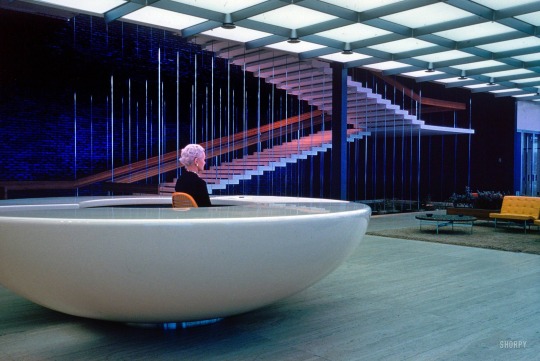
18 notes
·
View notes
Text

Eero Saarinen, Interior view of General Motors Technical Center, Michigan, 1956. Foto Ezra Stoller.
735 notes
·
View notes
Text

For the Benefit of All: Assistive Tech Developed from NASA Tech
What do modern cochlear implants and robotic gloves have in common? They were derived from NASA technology. We’ve made it easier to find and use our patented inventions that could help create products that enhance life for people with disabilities.
October is National Disability Employment Awareness Month, which highlights the contributions of American workers with disabilities – many of whom use assistive technology on the job. Take a look at these assistive technologies that are NASA spinoffs.

Low-Vision Headsets
The Joint Optical Reflective Display (JORDY) device is a headset that uses NASA image processing and head-mounted display technology to enable people with low vision to read and write. JORDY enhances individuals’ remaining sight by magnifying objects up to 50 times and allowing them to change contrast, brightness, and display modes. JORDY's name was inspired by Geordi La Forge, a blind character from “Star Trek: The Next Generation” whose futuristic visor enabled him to see.

Cochlear Implants
Work that led to the modern cochlear implant was patented by a NASA engineer in the 1970s. Following three failed corrective surgeries, Adam Kissiah combined his NASA electronics know-how with research in the Kennedy Space Center technical library to build his own solution for people with severe-to-profound hearing loss who receive little or no benefit from hearing aids. Several companies now make the devices, which have been implanted in hundreds of thousands of people around the world.

Robotic Gloves
Ironhand, from Swedish company Bioservo Technologies, is the world’s first industrial-strength robotic glove for factory workers and others who perform repetitive manual tasks. It helps prevent stress injuries but has been especially warmly received by workers with preexisting hand injuries and conditions. The glove is based on a suite of patents for the technology developed by NASA and General Motors to build the hands of the Robonaut 2 humanoid robotic astronaut.

Smart Glasses
Neurofeedback technology NASA originally developed to improve pilots’ attention has been the basis for products aimed at helping people manage attention disorders without medication. The devices measure brainwave output to gauge attention levels according to the “engagement index” a NASA engineer created. Then, they show the results to users, helping them learn to voluntarily control their degree of concentration. One such device is a pair of smart glasses from Narbis, whose lenses darken as attention wanes.

Anti-Gravity Treadmills
A NASA scientist who developed ways to use air pressure to simulate gravity for astronauts exercising in space had the idea to apply the concept for the opposite effect on Earth. After licensing his technology, Alter-G Inc. developed its anti-gravity G-Trainer treadmill, which lets users offload some or all of their weight while exercising. The treadmills can help people recover from athletic or brain injuries, and they allow a safe exercise regimen for others with long-term conditions such as arthritis.
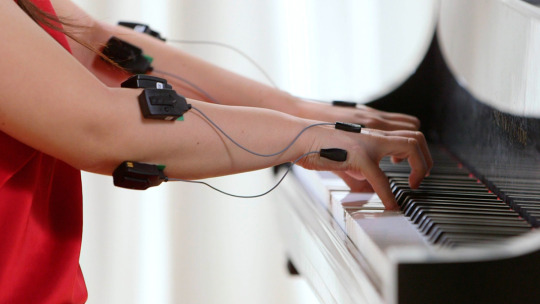
Wireless Muscle Sensors
Some of the most exciting assistive technologies to spin off may be yet to come. Delsys Inc. developed electromyographic technology to help NASA understand the effects of long-term weightlessness on astronauts’ muscles and movements. Electromyography detects and analyzes electrical signals emitted when motor nerves trigger movement. Among the company’s customers are physical therapists developing exercise routines to help patients recover from injuries. But some researchers are using the technology to attempt recoveries that once seemed impossible, such as helping paralyzed patients regain movement, letting laryngectomy patients speak, and outfitting amputees with artificial limbs that work like the real thing.
To further enhance the lives of people with disabilities, NASA has identified a selection of patented technologies created for space missions that could spur the next generation of assistive technology here on Earth.
Want to learn more about assistive technologies already in action? Check out NASA Spinoff to find products and services that wouldn’t exist without space exploration.
Make sure to follow us on Tumblr for your regular dose of space!
#NASA#space#tech#technology#spinoff#robotics#physical therapy#disability#disabled#accessibility#a11y#inventions
832 notes
·
View notes
Text
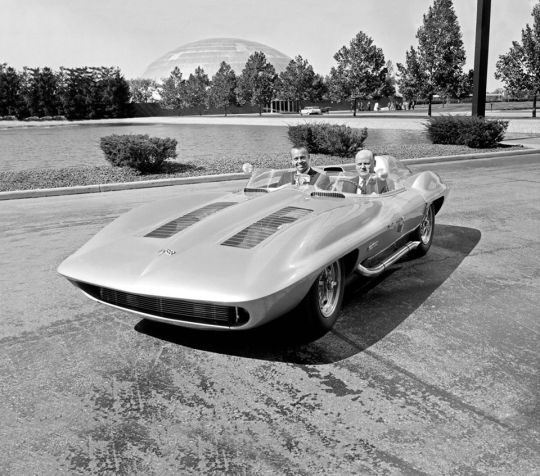
Astronaut Alan Shepard with GM designer Bill Mitchell in a Corvette Stingray Racer concept car at the General Motors Technical Center in Warren, Michigan, 1959.
184 notes
·
View notes
Text
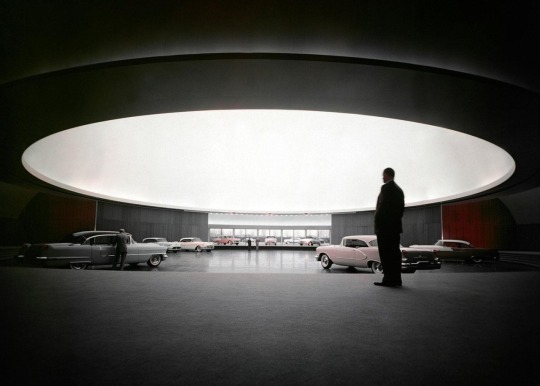
Eero Saarinen, Interior view of General Motors Technical Center, Michigan, 1956. Foto Ezra Stoller
129 notes
·
View notes
Text

General Motors Technical Center (1946-56) in Warren, MI, USA, by Eero Saarinen. Photo by Balthazar Korab.
215 notes
·
View notes
Photo
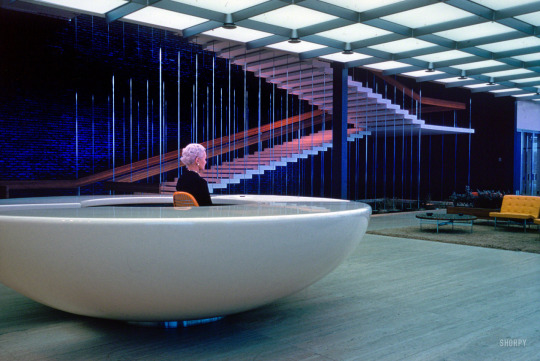
General Motors Technical Center, Warren, Michigan, United States of America - Eero Saarinen (1956)
193 notes
·
View notes
Text
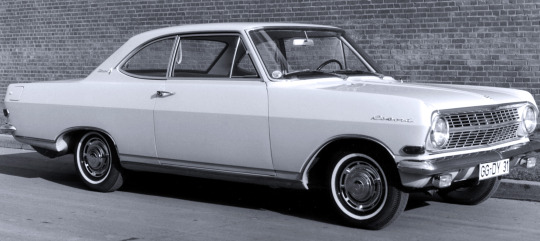
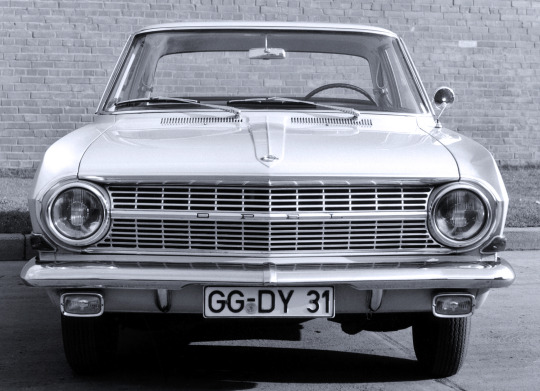

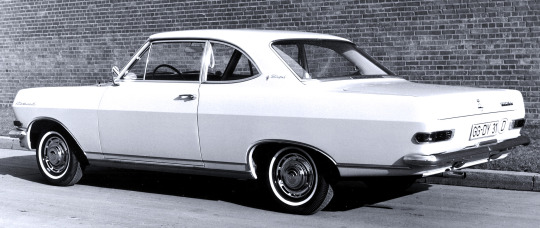
Opel Rekord A Coupé, 1963. This was the 4th generation of Opel's mid-range Rekord. While the Rekord Saloon had been designed General Motors Technical Center in Warren, Michigan the coupé was designed in Germany
#Opel#Opel Rekord A Coupé#Opel Rekord#Opel Rekord Coupé#1963#4th generation#General Motors#General Motors Europe#1960s
131 notes
·
View notes
Photo
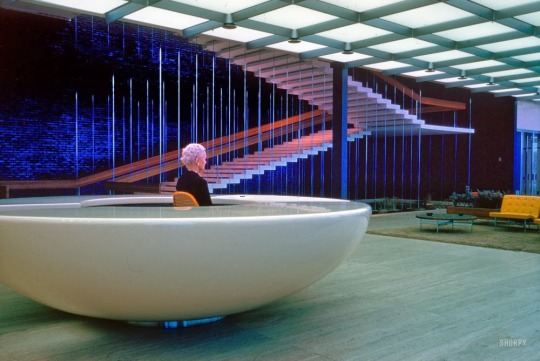

General Motors Technical Center (1956) Eero Saarinen
The Design Center, designed by Eero Saarinen, constructed from 1953 to 1955, and initially known as the Styling Center, is one of the most distinctive complexes at the Technical Center.
For more information on the General Motors Technical Center, and Michigan's other modern buildings, visit www.michiganmodern.org.
258 notes
·
View notes
Text
this is okay to rb i think, especially if you have anything to add or any insight. idk. i'm tagging this the way that i am because i'm seeking community/connection(tm) or something
hypotonia is not like. a rare thing. not really. but i do remember my OT googling what it was.
low muscle tone/hypotonia may technically be a symptom rather than a diagnosis (barring benign congenital hypotonia, which afaik is controversial) but it's the closest thing to a "diagnosis" i've been given for some of this stuff because the potential cause of it hasn't been investigated and i guess it's not exactly urgent since my particular case isn't severe and doesn't seem progressive (hypotonia can be progressive & is involved in some progressive and degenerative conditions.)
but i wish it was talked about more and i wish more was known about it works and how it affects bodily function and i wish what we DO know about it was more accessible to the public when it comes to those who suffer from it. it's also kinda hard whether to KNOW you have it or not since its "signs" have so much overlap with other conditions that aren't related to muscle tone. it ranges a lot in severity too. and there's two different types (central and peripheral.) it's linked to dozens of diagnoses too which is why i say it's not uncommon.
but also i guess due to the complexity of how it affects the body and its lack of distinctiveness with most of its symptoms makes it kinda...hard to talk about? and i imagine w/ some people it's hard to distinguish the effects of hypotonia vs. their other problems. issues with chewing, writing, breathing, speaking, posture, coordination, etc. can be due to so many different things ranging from mental to physical. but it's not always something that can be lumped together w/ those other things because there's "my muscles don't work" in a terms of chronic muscular pain vs. "my muscles don't work" in terms of, like, they lack the ability to adequately support the body and bodily movement. if that makes any sense.
which ranges from someone like me where having to hold myself up sucks + mild motor skill/coordination impairments and mild developmental milestone delays, but others never meet those milestones or need assistance with things like breathing and ingesting food.
it's not a diagnosis but it can affect the body in complex ways like muscle shortening and stiffness due to our bodies having to compensate in weird ways for the lack of adequate tone (esp those of us who grew up with it), tibial torsion and femoral anteversion, flatfoot and knock-knees, reduced cervical lordosis sometimes leading to bruxism and occipital headaches, etc. PT centered around muscle strengthening to correct my "improper" movement and stuff.
and there's other stuff that can come with it that people like to consider """gross""" like drooling, constipation and other gastric, and pelvic floor dysfunction which can result in incontinence/problems with bladder control. muscles are involved in a lot of things. wild.
i'm rambling but i just wish more people talked about it. all i really have is that one interview that surestep did with meagan veracha, who has hypotonic cerebral palsy, about living with hypotonia as an adult.
maybe i wouldn't care all that much if i had a diagnosis that would "explain it" but "i might have gHSD/hEDS" doesn't rly do that for me because ppl in those communities obviously focus a lot on the joint dysfunction aspect (because those 2 conditions center around hypermobile joints so that's just natural, it's not a bad thing per-se, barring other problems that those communities have) but for me my case of symptomatic generalized hypermobility is secondary in how it impacts me vs. my muscles being bad at their job and my hypermobility might even be secondary to my hypotonia anyway.
dyspraxia/DCD (some people with it have hypotonia but not all - i thought i had it before i was told i was identified as having hypotonia when i was a kid...over two decades late) is another guess but again that centers more around coordination than things like "anything other than lying in bed is hard on me because my muscles don't support my body like they're supposed to."
maybe muscle tone is a complex medical concept that shouldn't really enter the public lexicon but i have no other language for it.
41 notes
·
View notes
Text

interior do general motors technical center em michigan pelo arquiteto eero saarinen (1910-1961)
10 notes
·
View notes
Photo
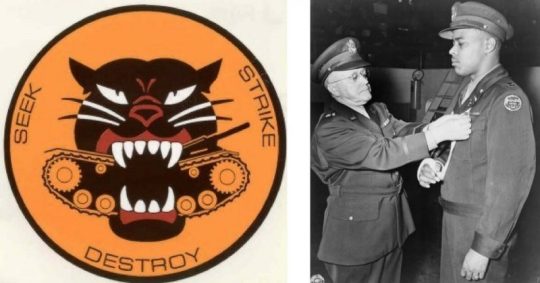
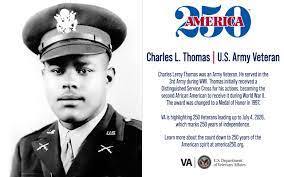
Charles Leroy Thomas was born 17 April 1920 in Birmingham, Alabama. He grew up in Detroit and graduated from Cass Technical High School in 1938. Thomas then worked as a molder for the Ford Motor Company (Ford River Rogue factory) with his father, and was a student at Wayne State University studying mechanical engineering.
He was drafted, and entered the U.S. Army on January 20, 1942, at Fort Custer, Michigan. He completed Basic and Advanced Infantry Training at Camp Wolters and was assigned to the Infantry Replacement Training Center at Camp Wolters.
When the Army began forming tank destroyer units, Thomas was transferred to Camp Carson, Colorado and joined the segregated 614th Tank Destroyer Battalion, which had been activated on July 25, 1942. The soldiers were African, but most of the officers were white. Thomas quickly rose to the rank of Sergeant during unit training and was chosen to attend the Tank Destroyer Officer Candidate School (OCS) Class # 21 at Camp Hood, Texas when the battalion was transferred to Camp Bowie Texas on December 18, 1942.
Thomas was commissioned a second lieutenant upon graduation from OCS on March 11, 1943, and returned to Camp Bowie to assume command of Company C, 614th Tank Destroyer Battalion and prepared the unit for the move to Camp Hood that was completed on March 23, 1943.
On August 27, 1944, he deployed with the 614th to England, arriving on September 7. On October 8, the 614th was on Utah Beach in Normandy, France. The 614th led by Lieutenant Colonel Frank S. Pritchard, then would join General Patton's Third Army in Metz, France. The 614th saw its first combat on November 28. On December 5, the 614th was attached to 411th Infantry Regiment, and on December 6, the 614th was attached to the 103rd Infantry Division..
On December 14, 1944, 1st Lt. Thomas volunteered to lead 3rd Platoon, C Company, 614th Tank Destroyer Battalion in a task force named "Task Force Blackshear" to storm and capture the village of Climbach, a strategically important town which was five miles from the German border. The task force spearheaded by Thomas' M20 scout car (modified M8), consisted of a platoon of Sherman tanks from the 47th Armored Battalion, 14th Armored Division, a platoon of F Company (riding on tanks), 411th Infantry, 103rd Infantry Division, 3rd Platoon, C Company, 614th Tank Destroyer Battalion, rest of F Company, 411th Infantry, and a heavy weapons platoon. Approaching Climbach was uphill, Thomas' armored scout car was knocked out by enemy fire from the German 21st Panzer Division, and he was wounded.
Thomas helped his crew out of the vehicle, but as he left the car's protection, he was again wounded in the chest, legs and arms. Despite his wounds, Thomas directed the dispersal and emplacement of the anti-tank guns, which then returned fire and covered the attempt by the rest of the task force to outflank the defenders. He briefed the 3rd Platoon leader of C Company, a first lieutenant, on the general situation, and only when he was sure the situation was under control did he allow himself to be evacuated. 3rd Platoon, C Company continued to fight for four hours, losing two of its four guns and over half its men as casualties (3 dead, 17 wounded).
The "valorous conduct" of the platoon, "in the face of overwhelming odds enabled the task force to capture its objective", the village of Climbach, and forced the defenders to withdraw to the Siegfried Line. 3rd Platoon, C Company, 614th Tank Destroyer Battalion, was awarded a Distinguished Unit Citation, the first black combat unit, and the first unit attached to the 103rd Division to be so honored. Its soldiers received four Silver Stars and nine Bronze Stars. Captain Thomas received the Distinguished Service Cross on February 20, 1945, and returned home a hero, though he played down his role – "I know I was sent out to locate and draw the enemy fire, but I didn't mean to draw that much." Thomas remained in the Army, and retired with the rank of major on August 10, 1947.
Thomas married in 1949, and his wife and he had two children. He went to work as a missile technician at Selfridge Air Force Base and later as a computer programmer for the Internal Revenue Service. He died of cancer on February 15, 1980. He was buried in Westlawn Cemetery in Wayne, Michigan.
In the early 1990s, it was determined that African soldiers had been denied consideration for the Medal of Honor (MOH) in World War II because of their race. In 1993, the U.S. Army had contracted Shaw University in Raleigh, North Carolina, to research and determine if there was racial disparity in the review process for recipients of the MOH. The study commissioned by the U.S. Army, described systematic racial discrimination in the criteria for awarding decorations during World War II. After an exhaustive review of files, the study recommended in 1996 that ten African Americans who served in World War II be awarded the MOH. In October of that year, Congress passed legislation that would allow President Clinton to award the Medal of Honor to these former soldiers. Seven of the ten including Thomas were approved, and awarded the MOH (six had Distinguished Service Crosses revoked and upgraded to the MOH) on January 12, 1997. On January 13, 1997, President Clinton presented the MOH to the seven African Americans; Major Thomas and five others were posthumously presented the MOH. A niece of Thomas accepted his MOH during the ceremony. Vernon Baker was the only living recipient of the medal at the time.
Medal of Honor Citation stated the following:
For conspicuous gallantry and intrepidity at the risk of his life above and beyond the call of duty: Then Lieutenant Charles L. Thomas distinguished himself by extraordinary heroism in action on 14 December 1944. One platoon of Company C, 614th Tank Destroyer Battalion, was designated as the lead element in a task force formed to storm and capture the village of Climbach, France. Lieutenant Thomas, the Commanding Officer of Company C, realized, with the obscurity of information regarding the enemy and a complete lack of reconnaissance, the mission would be an extremely dangerous one. Fully cognizant of the danger, Lieutenant Thomas volunteered to command the selected platoon of his company and ride in the column's leading vehicle - a highly maneuverable, but equally vulnerable, M-20 scout car. Lieutenant Thomas knew that if there was a concentration of enemy armor in the village, as was believed, he would absorb the initial shock of the first enemy resistance. The task force left Preuschdorf, France, at 1023 hours, and proceeded to advance in column toward Chimbach. Lieutenant Thomas in his scout car stayed well in front of the column. At 1400 hours, upon reaching the high ground southeast of the village, Lieutenant Thomas experienced initial contact with the enemy. As his scout car advanced to an exposed position on the heights, he received intense direct fire from an enemy artillery, self-propelled guns, and small arms at a range of seven hundred yards. The first burst of hostile fire disabled the scout car and severely wounded Lieutenant Thomas. He immediately signaled the column to halt. Before leaving the wrecked vehicle, Lieutenant Thomas and the crew found themselves subjected to a veritable hail of enemy fire. Lieutenant Thomas received multiple gunshot wounds in his chest, legs, and left arm. In spite of the intense pain caused by his wounds, Lieutenant Thomas ordered and directed the dispersion and emplacement of his first two antitank guns. In a few minutes these guns were effectively returning the enemy fire. Realizing that it would be impossible for him to remain in command of the platoon because of his injuries, Lieutenant Thomas then signaled for the platoon commander to join him. Lieutenant Thomas then thoroughly oriented him as to the enemy gun positions, his ammunition status, and the general situation. Although fully cognizant of the probable drastic consequences of not receiving prompt medical attention, Lieutenant Thomas refused evacuation until he felt certain that his junior officer was in full control of the situation. Only then did Lieutenant Thomas allow his evacuation to the rear. Throughout the action, Lieutenant Thomas displayed magnificent personal courage and a complete disregard for his own safety. His extraordinary heroism spurred the soldiers of the platoon to a fierce determination to triumph, and resulted in a mass display of heroism by them. Lieutenant Thomas' intrepid actions throughout the operation reflect the highest traditions of the military service.

37 notes
·
View notes
Photo
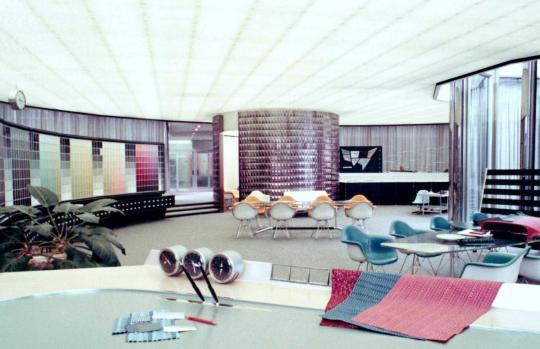
General Motors Technical Center's styling color studio, designed by Eero Saarinen, c.1955
17 notes
·
View notes
Photo



EDIT: V2 is now out! I shortened ‘Identity’ to ‘ID’ for more room, and now recommend pronouns go up with the name to provide even more room (which is also a practical readability tweak in retrospect lmao)
------------------
Ever wanted a template for your Pokemon Legends:Arceus oc? Well, look no further!! I decided to make one of my own for free use!
Featuring the base template; a sample of how it looks when filled out, using my own beloved oc; AND a standalone copy of the Pokemon team file, in case your trainer has more than six pokemon to feature, or if that’s the only part you’re really interested in! Btw, the boxes are transparent so you can just paste screenshots from your game, like seen above, OR you can draw out their profile images if you’d prefer!!
Meanings I had in mind when making and filling out the trainer stats:
stamina: physical ability to keep going without fainting
resilience: ability to recover or work through ailments and dmg
stealth: ability to go unnoticed or unchallenged by pokemon
coordination: fine motor skills and hand-eye coordination
intelligence: technical knowledge
wisdom: ability to apply their knowledge
intuition: their ability to sense if something is amiss
charisma: how likeable and well-received your character is
...Feel free to follow these outlines, or use your own interpretation!
Enjoy, and feel free to share your pages with me if you’d like!
Some further minor notes re: the sample, as well as notes on some settings I used to fill this out below!
Update: also available on Deviantart!
-There’s no watermark because I nearly forgot to do that until Right before posting, but if you follow my formatting it should fit just fine!
-This will also be posted on dA, once I get some sleep I will post and link it here!
-I was going to include a field for pokemon gender, then edited it out because I realized I could just put it next to the pokemon names like traditionally done. I then proceeded to forget this step lol
-I also forgot to factor in Alphas and Shinies (despite my beloved Ophelia being Right There as an Alpha). Currently my suggestion is to copypaste the symbols, along with gender symbols, and stick them next to the names somewhere. The names don’t Have to be centered so there’s plenty of room to add them in. If I or anyone else come up with a better solution to these issues, I will update the post and template accordingly!
-For typesetting, I used typewriter font, in a range from 3pt to 8pt with variable line spacing for the info filled out. Obviously, feel free to use your own preferred font, sizing and color! I just wanted to stay congruent with what I already had.
-For the stars, I just paint-bucketed, with a 2px expansion setting instead of 0 or 1. So long as you use the same color as on the template (the ‘pokemon team’ type is easiest to color pick from) it comes out nice and clean as seen above!
-I realized that honestly this template is fairly generic for being a pokemon legends arceus template.... Hopefully it still suits everyone’s needs! I’m also ok with other people using this as a generic pokemon oc form, tbh. ^^
#pokemon#pokemon legends arceus#pla#pla oc#oc template#template#pla oc template#resources#oc profile#oc form#man what do people tag these as????#blablablah#ritsu#I dislike graphic design as probably observed by the plainness so Please do not ask me to make anymore of these#I'll do updates or remakes for this form and that's IT for the foreseeable future djfgdhsjk#pla template#pokemon oc#pokemon oc template#trainer oc#trainer oc template
86 notes
·
View notes